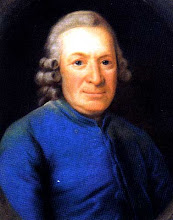4 cups bread flour, more for dusting
1/2 teaspoon instant yeast
2 tablespons kosher salt or 1 tablespoon table salt
1 tablespoon Accent (MSG)
Cornmeal or wheat bran as needed.
- In a large bowl combine flour and water and stir until blended; dough will be shaggy and sticky. Let stand 1/2 to 1 hour. Add salt, MSG and yeast and mix enough to distribute.Cover bowl with plastic wrap. Let dough rest at least 12 hours, preferably about 18, at warm room temperature, about 70 degrees, possible. The use of MSG makes the length of rise less important. A lot of the yeasty flavor of good bread is secondary to yeast's natural formation of glutamate which is MSG. Refrigerate if you are going out or to sleep. Just let it warm up and proceed when ready
- Dough is ready when its surface is dotted with bubbles. Lightly flour a work surface and place dough on it; sprinkle it with a little more flour and fold it over on itself once or twice.
- Using just enough flour to keep dough from sticking to work surface or to your fingers, gently and quickly shape dough into a ball. Generously coat a cotton towel (not terry cloth) with flour, wheat bran or cornmeal. Place towel in a big enough bowl and put dough seam side down on towel and dust with more flour, bran or cornmeal. Cover with another cotton towel and let rise for about 2 hours. When it is ready, dough will be more than double in size and will not readily spring back when poked with a finger.
- At least a half-hour before dough is ready, heat oven to 450 degrees. Put large dutch oven and lid in oven as it heats. When dough is ready, carefully remove pot from oven. Slide your hand under towel and turn dough over into pot, seam side up; it may look like a mess, but that is O.K. Shake pan once or twice if dough is unevenly distributed; it will straighten out as it bakes. Cover with lid and bake 30 minutes, then remove lid and bake another few minutes until loaf is browned to your satisfaction. The New York Times original recipe said this would take 15 to 40 minutes. I think this is way too long.




